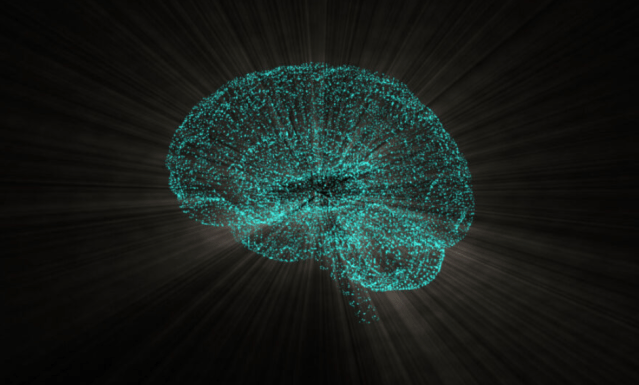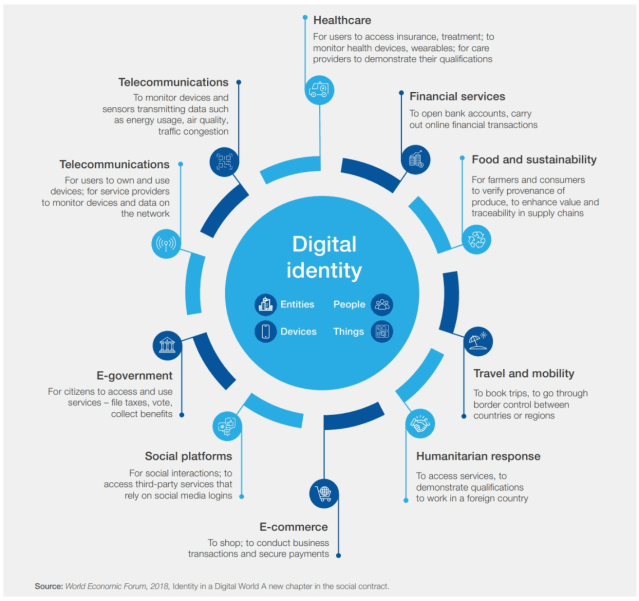Schwab’s WEF is now pushing to implant Tracking Microchips in Humans as part of The Great Reset agenda
The World Economic Forum (WEF) is attempting to normalize the idea of implanting tracking chips into humans, via the Internet of Bodies – a highly controversial technology.

By Sikh for Truth; Editor of Truth Talk UK
The Internet of Bodies (IoB) is the biological extension of the Internet of Things (IoT) that brought us driverless cars and smart homes.
As part of the Great Reset, both are part of the plans for the future of humanity devised by the elites of the World Economic Forum.
The IoB confirms its belief in the eternal benefits of technology and promises to improve our health and extend our life. That’s a good idea, isn’t it? No, the meaning becomes clear once you understand it.
The keyword is here is data. Data is supposed to be the new oil in this new technological era. Our phones and Fitbits are used to collect data about our locations, spending patterns, educational and economic status, political allegiances, walking steps, and oxygen levels.
But through the Internet of Bodies, more and more nanosensors and robots will be embedded in our bodies, turning us into a quantifiable information platform that can be easily commoditized and even manipulated remotely.
By collecting all this data, data owners will be able to develop very detailed profiles of the population that can be used to enhance surveillance and security defined by authorities.
Klaus Schwab, the founder of the WEF and proponent of the Great Reset, believes that the pandemic and lockdowns are an opportunity to spread this technological use, which “will result in a fusion of our physical, digital, and biological identities”.
His aim is to overcome our human limitations by integrating enough technology into the body and placed within the Fourth Industrial Revolution framework.
In the 2020 WEF article “Tracking how our bodies work could change our lives” published when the Great Reset was formally announced in June 2020, Xiao Liu wrote: “We’re entering the era of the “Internet of Bodies”: Collecting our physical data via a range of devices that can be implanted, swallowed, or worn.”
This is now being stepped up a gear with a new WEF article published Aug 16, 2022 – titled: “Augmented tech can change the way we live, but only with the right support and vision” written by Kathleen Philips Vice President of R&D at IMEC.
She suggests “we’re already making the first strides towards an “augmented society”.
Pushing the idea that we humans must be augmented/fused with technology to perform so-called smart tasks, the goal is to have the mass population of the world microchipped: “Are we moving towards a ‘brave new world’? As scary as chip implants may sound, they form part of a natural evolution that wearables once underwent.”
All in the mind:
She advocated the use of various technologies which will no doubt be sold as doing some positive good such as “implants linked to medical conditions”. Or for “Someone on long-term medication may want to try an implant that sends very precise electrical or optical pulses instead.” And other augmentation and technological aids such as glasses, cochlear implants or prosthetics designed to restore a lost or impaired function.
But she mixes this up with much more sinister aspects, such as “Brain implants take us one step further and allow us to tap straight into the body’s “operating system”.
She admits that “brain implants may not be the first choice in our augmented society.”, that’s because it will be a more subtle augmentation to begin with, smart devices, digital identities, and biometrics.
The WEF makes a clear case that implanting chips into children could be viewed by parents as a “solid, rational” move. The WEF calls AR and similar tech transformative – but in need of “the right support, vision, and audacity.”
“As scary as chip implants may sound, they form part of a natural evolution that wearables once underwent. Hearing aids or glasses no longer carry a stigma,” the blog post reads.
All this real-time health data and the Internet of Bodies leads to programmable freedom, programmable money, and programmable people, or “hackable humans,” as WEF adviser Yuval Harari describes them.
Recently both Amazon and Mastercard have been trailing their new technology platforms and frameworks within the retail environment.
Because now “With a smile or a wave, paying in store just got personal”. Mastercard recently unleashed a new era of biometric payments to enhance the checkout experience and all it will require is a quick smile or wave of your hand.
And Amazon’s palm-reading payment technology will expand to dozens of Whole Foods locations across California.
Shoppers will be able to pay for groceries by scanning the palm of their hand at checkout devices instead of using cash or card, as this is more evidence of the emergence of a cashless society.
Using biometrics and digital identities Amazon and Mastercard hope to transform and streamline modern retail environments using biometric checkout services.
We are already seeing the rollout of global digital identities, the first phase of this is to roll out apps on phones, but the next iteration would be more invasive, having your digital wallets embedded inside your body in a form of an internet of bodies implant.
You could for example use this to pay for things and to validate your digital identity at checkouts to ensure a “more seamless payment experience to users.”
Earlier this year the World Economic Forum produced a 46-page report explaining its plans for a worldwide unifying digital identity data management policy.
The WEF’s report defines digital ID as “an electronic ID (…) equivalent to an individual’s identity card, which is a way to provide verified information about a person to a program for processing.”
The report, Advancing Digital Agency: The Power of Data Intermediaries, written by members of the Task Force on Data Intermediaries at the WEF, describes how the initiative would centralize data about social media, taxes, voting, food traceability, healthcare, telecommunications, and commercial and personal business transactions.
As such, the WEF would like to see the IoB regulated uniformly across the globe, and the Davos elite continuously calls for ethical governance, but that does not negate the surveillance aspects. After consenting to the draconian measures disguised as serving the greater good, everybody would be spied on equally.
According to the WEF Global Risks 2019 report, the IoB relies heavily on collecting biometric data, which will “allow new forms of social control.”
In the same report they write that this is a Digital Panopticon:

This transformative technology – augmented reality is also set to transform our jobs and even how we shop in the future.
“Augmented Retail is Coming Soon in the Metaverse” – Declared Mark Edward Rose at this year’s Davos gathering. This is part of The Rise of the Stay-at-Home Economy.
Now, biometrics are being introduced in retail stores to prepare us for the Metaverse, which at its core is social engineering.
The Metaverse will also see humans inhabit the digital unknown and digital identities will play a starring role.
Do you know who else will play a starring role? The WEF. That’s who. The elites in Davos appear very eager to govern these new immersive virtual worlds and to control the data outputted to further reshape society in their own technocratic image.
At this year’s WEF event we had the head honcho Pekka Lundmark the President and CEO of Nokia, he came out to declare that “The continued acceleration of technology transformation will mean the Smart Phone [as we know it] will become obsolete, “All technologies would be directly embedded into our bodies.”
The Great Reset and it’s broader Fourth Industrial Revolution is dramatically expanding the surveillance state with real-time tracking of data and phones, digital identity and wallets embedded into the body.
It started with the mandates that people receive digital certificates to travel, then the current push for global digital identities which will link up all our data footprints and data sources. The next step is to have that technology augmented, and implanted into people’s bodies to monitor them directly.
Of course, all of this is being sold for convenience that technology will support us, and will improve our overall quality of life. But underneath it all is nothing more than mass surveillance where our every move could be monitored, nudged, and corralled.
This article has been archived for your research. The original version from The Exposé can be found here.





